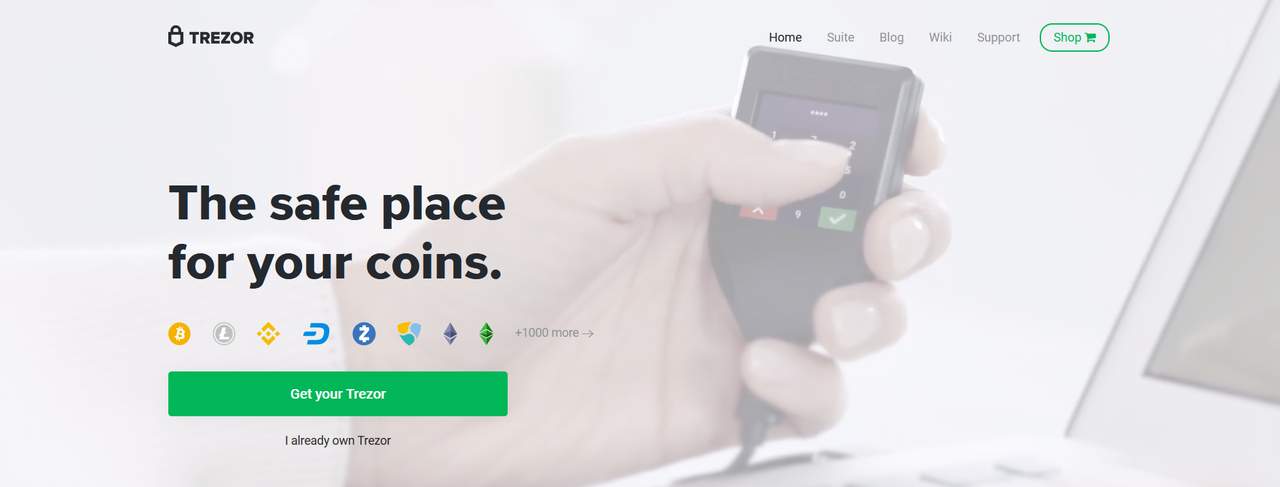Get started with your Trezor hardware wallet
This page walks you through a secure, practical setup so you can manage cryptocurrency safely. It focuses on the essential steps: verifying the device, installing firmware, creating a recovery backup, and connecting to the software (Trezor Suite or compatible wallets). Follow each step carefully — security is about detail.
What you'll need before you begin
- The sealed Trezor hardware device and original packaging
- A computer (Windows/macOS/Linux) or supported mobile device and a USB cable
- A pen and paper for writing down your recovery phrase — never store it digitally
- An up-to-date browser (if using Trezor Suite web) and a stable internet connection
Step 1 — Inspect and verify the device
First, check packaging seals and tamper-evidence. A genuine device should arrive in factory-sealed packaging; if the packaging looks opened or altered, stop and contact the seller. Power on the device only when you’re ready to set it up.
Step 2 — Initialize and install official firmware
- Connect the device to your computer with the supplied cable.
- Visit the official Trezor setup page or download Trezor Suite from the vendor’s official site (type the address yourself; avoid links in emails).
- Follow on-screen prompts to install the latest firmware. Installing official firmware is mandatory — it prevents third-party or malicious versions from running.
Step 3 — Create a new wallet and write the recovery phrase
When prompted, create a new wallet. The device will generate a recovery phrase (typically 12, 18, or 24 words) on its screen. Write every word down in order, by hand. Do not take a photo, copy into a password manager, or save this phrase on any digital device.
- Write the words legibly on paper or a metal backup plate.
- Store one copy in a secure, fire- and water-resistant place. Consider geographically separating backups.
- Do a quick verification on the device when asked — it will prompt you to confirm a few words to ensure you recorded them correctly.
Step 4 — Set a PIN and (optional) passphrase
Choose a PIN to protect the device from physical access. The PIN is entered on the device screen, making it safe from keyloggers on your computer. A passphrase acts as an additional hidden wallet (optional) — use it only if you understand the recovery implications (losing the passphrase means losing the funds in that hidden wallet).
Step 5 — Connect to Trezor Suite or your chosen wallet
- Open Trezor Suite (desktop or web) and connect the device. Confirm the connection on the device display.
- Create or import accounts for the cryptocurrencies you plan to use.
- Test by receiving a tiny amount first — confirm the address shown by the app and on the device match exactly before sending funds.
Security best practices
- Never share your recovery phrase. No legitimate service or support personnel will ever ask for it.
- Keep firmware updated — updates patch security issues and add improvements.
- Use the device’s built-in display to verify transaction details before confirming.
- Avoid wallets or apps from unknown developers; prefer official or well-reviewed integrations.
Troubleshooting quick tips
If the device is not recognized: try a different USB port or cable, check browser extensions that might block USB access, and ensure the device firmware is up to date. If you suspect compromise, move funds to a new wallet created on a known-good device and restore from a verified recovery phrase.
Short FAQ
Q: Can I recover my wallet if I lose the device?
A: Yes — restore using your written recovery phrase on a new compatible hardware wallet or supported software that accepts the same seed standard.
Q: Is the recovery phrase the same as a password?
A: No — the recovery phrase is the ultimate backup. Treat it as sensitive material and store it offline only.
